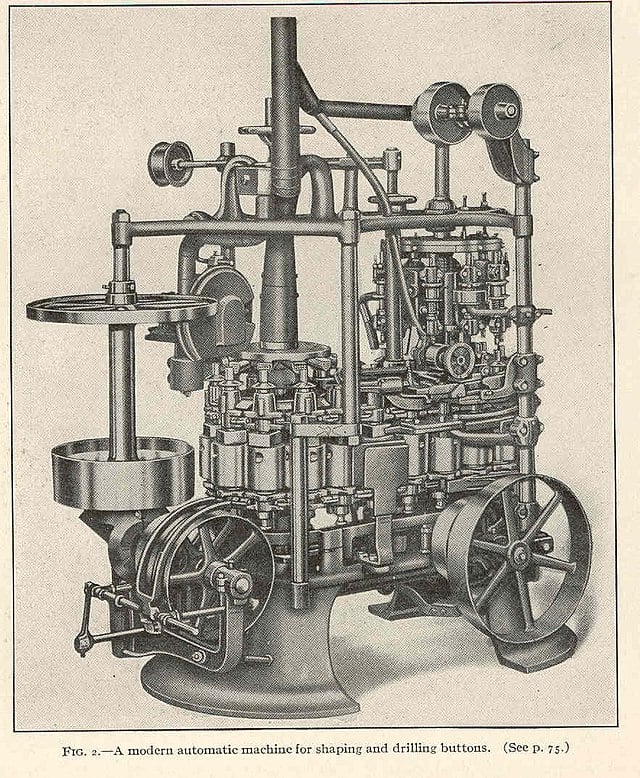My son is about ready for his first printer. His school is running Cetus MK3 printers, he has a class using them, and his teacher has recommended this printer. He also has an educational seat of Fusion 360.
I’m proficient with Mastercam and hand written/modified G-code. I can help him with CAD no problem. Alignment, assembly, adjustment, and backlash are second nature for me. Have a little better than layman’s understanding of printers. (Lusted over the Markforged printer that could do continuous carbon fiber.)
Eventually, will be building my own shop and hope my son might work with me. Hope to include printing, especially in metal.
I’ve seen some of the flap about Bambu and them closing up the software tool chain. I would like to avoid that sort of thing, for now, openness is better.
Top of my budget is around $500, with $200 probably being better.
Usable prints for tooling/spacers/repairs would be a bonus as would being able to print UV resistant plastic.
My goal for him is to get gud at modelling and get a feel for computer controlled movement. Another goal, harder to describe, is him finding the joy in mechanical tinkering and producing an idea made physical.
Thank you much! What do?
IMO there are two things to consider. First: do you want FDM or SLA. You’re trading resolution for build volume. If you’re going to be making a lot of smaller things, SLA printers can offer more output since they print the same speed no matter how much of the build plate is occupied. Also consider the size of the things you’ll print. In other words, how much build volume should you be looking for.
Second: are you seeking to tinker with the printer as a point of interest/engagement or are you simply looking for the printer to be a tool?
Off-the cuff list:
- enders are cheap, but will likely result in you wanting to fiddle with the printer
- Sovol are a bit more expensive, but should require less fiddling
- Prusas have the reputation for set it up and forget it workhorses and are priced accordingly
- Voron printers are 100% open source and there is no “official” storefront or kit. Plenty of companies offer a “BOM in a box” option. You’ll build a printer from parts and it’s a very solid base to just print with or to fiddle with. If you dig through my post history you’ll see quite a few posts and comments about mine. Sourcing a Voron can be pricey though
… There are tons of other options too
FDM for now. Not planning on doing casting or proto mockups at this time.
Envelope is not a large concern, I assume it is similar to machining. You buy 1.5x the size you think you need and find out it should have been twice as big. The plan is to cut teeth on this printer before moving to something better/larger.
Mostly want to use the printer as a tool, not bothered if some tinkering is required. A Harbor Freight machine like a drill press or band saw is a ‘kit’. Use it for a little bit, take it apart and fix the manufacturing shortcomings. I’m okay with a printer of similar build quality as long as the bones are good.
Voron sounds interesting, have seen the Enders as well, seem to be okay.
SLA is also a mess
On the envelope side: printing is more forgiving of having too small an envelope than machining. Since printing is all about adding material you can usually split the thing you want to print into pieces. I still think it’s worth considering it the usual 200mm^3 will be enough since splitting parts can be annoying.
Harbor freight is a good comparison to an ender. They’re fit for purpose, have some cheap parts, and are a decent platform to modify from. They will work out of the box most of the time, but you’ll find yourself wanting to improve them.
Printer bones are very replaceable, especially if you have a functioning printer. I printed my Voron parts on my old i3 clone. I’ve now used my Voron to print future parts for itself before tearing some of it down and modifying things. People do the same with enders. There’s even an Ender variant that rebuilds the Ender with a lot of Voron design ideas.
The only thing to be aware of is ultimate cost. Yes, you can turn the ender into most anything over time. It could wind up costing more money and time doing this though. Ultimately, the decision on how far to take the modifications will be yours and you can choose whether or not you want to have a frankenprinter. You’ll also learn a lot along the way going this route, which takes me back to my original question: what are your goals for this project?
I guess my ultimate goal is that he learn to model and begin building proficiency with CAD to prepare him for CAM. I also want him to start getting a feel for CNC movement and thinking in Cartesian. I think the best way to get there is by getting him engaged in printing. I’m not sure if tinkering will help or hinder this process. I know it helped for me, but I’m not sure if it will for him. I think it might. Still pondering the appropriate level of tinkering, but am leaning towards Voron, not sure if that’s my personal bias.
I knew my way around a printer before building my Voron, but the act of building it from the ground up really helps get you back to the basics: these are really just CNC hot glue guns and the components are not very hard to modify and replace. It’s easy to build up a layer of mistique, which leads to not wanting to tinker, when confronted with something new.
You don’t have to pick up CAD skills to build a printer, but odds are you’ll find an opportunity to design some parts or iterate on someone else’s design.
I’ve been proficient at CAD for longer than I’ve had printers, but as you know printers make turning ideas into physical parts fairly easy. It took a little while for me to start printint jigs and functional prints, but once I transitioned from thinking “this annoys me” to “I bet I could design something to make this easier” I kept finding more and more opportunities to design things. To me, this matters a lot more than being proficient in CAD. I would say the same thing about programming - understanding where you want to go and why you want to get there can often be more important than writing the actual code.
I’ve been designing and printing things with my kids as long as they’ve been alive. At this point they take for granted that I’ll be able to design and print something to either fix a broken toy or make something better. They’re only 4 and 7, but they do like watching and “helping” me when I have CAD open. More importantly to me, they’re also identifying opportunities to make something.
Good luck with your kid! I hope you’re able to create an environment where their curiosity moves them in the direction of wanting to create things.
If you get a cheap project printer, the kid is likely to spend a lot of time obsessing over printers and mods instead of projects.
Personally, I do not regret buying a Prusa MK3 even though it was more than I initially wanted to spend. I do not tinker with it, and I own it for life with no proprietary products or software required. I don’t really care about upgrading it further. I have another little project printer I tinkered with a bunch, a Kingroon KP3S I got to test out klipper and decide if I wanted to build a Voron. I decided against because I can do enough with the MK3. I only have a little trouble with large ABS prints that have wall thickness variation constraints above the first couple of centimeters, and I can design around this with modularity.
If you have not tried or checked out FreeCAD, maybe do so. There are some challenges, but especially after the recent move to version 1.0, it is really nice to use. Fusion is just a long term subscription baiting scheme like bambu. I was around for Autodesk acquiring Eagle for EDA design, and vowed to never trust them with a bait scam again.
With my Prusa MK3, the software and printer just works. Joe has made concerning posts about anti open source sentiments and has started selling a new proprietary printer. So do your due diligence. If real ownership matters to you.
- The entire 3d printing hobby was started by Adrian Bowyer and the RepRap project. This community is where Joseph Prusa started and got involved with supplying kits, parts, and where the MK* nomenclature comes from.
- RepRap, Marlin, and Klipper are the main software used in most printers. Prusa uses a version of Marlin that is so modified it is not easy to reproduce using the configuration menu built into Marlin. This is the mechanism that was used to limit others from copying and undercutting Prusa which does continuous product production with full time employees and developers. This is very different than contract manufactured goods that only ever had a subcontracted developer work on a checklist of features and got paid on the contract. There will never be further development on contract manufactured goods produced by venture capital. Those products are incentivised to convince the stereotypical buyer to make a purchase and the product experience or even real ownership is irrelevant as is the reputation of the company itself. The only thing that matters is presentation to the majority of perspective buyers. This is why such companies focus on hardware specs instead of usefulness, community, and the while value stack.
- If you really watch people that review printers that also actually design and print real stuff, you will likely see one of three patterns:
1.) they have several cheap printers and only one or two ever work.
2.) They are renting a bambu and likely shilling it.
3.) They passively mention using their Prusa or you see it in the background occasionally.Seriously, I was not interested in Prusa’s at first, but I followed people long enough before pulling the trigger that this pattern became obvious to me. It is far more expensive to have several printer projects for just one or two that work. With hardware garbage like mobile devices, all of your buying options are proprietary junk you cannot own. There is not a single device sold with a fully documented SOC/processor and modem chip, so your only choice is to rent a device and be manipulated. With 3d printing, the entire hobby is built on open source and therefore full end user autonomy and ownership. You have a choice of neo feudalism in a world where you do not have self deterministic autonomy by supporting proprietary products, but it is the exception to the standards of this community. The real open source community is generally located around Voron and similar projects with LDO selling supporting kits in much the same way that Prusa did originally with RepRap.
In the 21st century, it is smartest to look into the software you want to run and make purchases based on the hardware that these projects support best. If you use git to clone a repo on GitLab or elsewhere, you can use a package called gource to create a graphical representation of the project commits over time. This makes it easy to see where people are actively developing the software. You will likely also notice who the key developers are and what hardware they likely own based on where they make tweaks over time. Buying similar hardware will make for the best experience in my opinion.
Note: These are my opinions and only my personal opinions. I am not a mod in this capacity. I do my best to separate my opinion and bias from any mod actions. All are welcome to their own opinions, disagreement, and ethics, so long as they follow the Hippocratic aphorism ‘first do no harm.’
I check on FreeCAD every so often. The UI team should be forced to wear underwear made from pinecones until they fix that horror. Been doing CAD/CAM for more than two decades and FreeCAD is so unintuitive that it is unusable. Making a sketch or taking a measurement shouldn’t require research. Recently tried it again and was unable to sketch angles for a brace I was making and needed dims on. Tried libreCAD (unfortunately 2d only) and was able to get my angles and lengths in 15min or so without any tutorials.
I hear and agree with what you’re saying about open CAD software. However, I don’t want my son trying to learn something that will just frustrate him. I wish OSS would catch up on CAD/CAM, I could ditch windows for good.
I watched the RepRap development back in the day, but eventually stopped following 3D printing closely. (Ended up with an Atlas Craftsman lathe with milling attachment that did all the home manufacturing I needed). Prussa and Voron are our top contenders for printers now. He’s got a spreadsheet where he’s comparing specs and I’m getting him to read the quick starts and manuals.
I’m going to dig into the Voron world and see if it’s a reasonable project for me to support my son on. Not sure if it will be beyond his attention span. Otherwise it will be either a Prussa or maybe an Ender.
I learned on FreeCAD and find it super intuitive now. There were frustrations at first, but I learned proper design with a thorough understanding of the TNI in all CAD as a result. Whatever a person starts on becomes a dependency especially with proprietary where user dependency is part of the design.
I have trouble with Blender because of the hotkey memorization required, but I can put down FreeCAD for months and return with no decay in skills. You’re welcome to disagree. That is just my experience.




